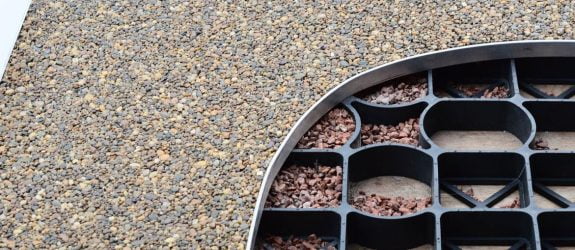Why choose Gridforce SuDS products?
Gridforce SuDS systems are designed to combine structural performance with sustainable engineering. The range includes seven paver options, all manufactured from low-density polyethylene (LDPE). This material offers a unique balance of high compressive strength with flexibility and resilience, enabling reliable performance across a wide spectrum of applications, from pedestrian pathways and car parks to emergency fire access routes and heavy goods vehicle (HGV) overrun areas.
In contrast to high-density polyethylene (HDPE), which is more susceptible to brittleness and fracture at low temperatures, LDPE ensures long-term durability and resistance to environmental stress. This material advantage underpins our ability to provide a 10-year product guarantee as standard.
Gridforce systems also incorporate a proprietary lug and slot interlocking mechanism, which ensures that pavers remain securely connected. This eliminates the risk of lateral movement, maintains long-term stability under load, and mitigates the formation of trip hazards.
Our HL40 paver demonstrates the system’s engineering efficiency. At only 40mm deep, it delivers exceptional load-bearing capacity as one of the strongest interlocking pavers on the market. Its reduced depth minimises the volume of infill material required, whether gravel or suitably graded soil, which leads to lower installation costs and sustainable resource use.





